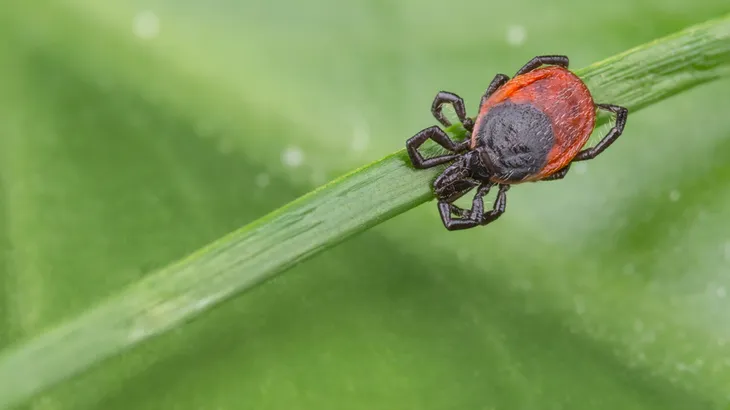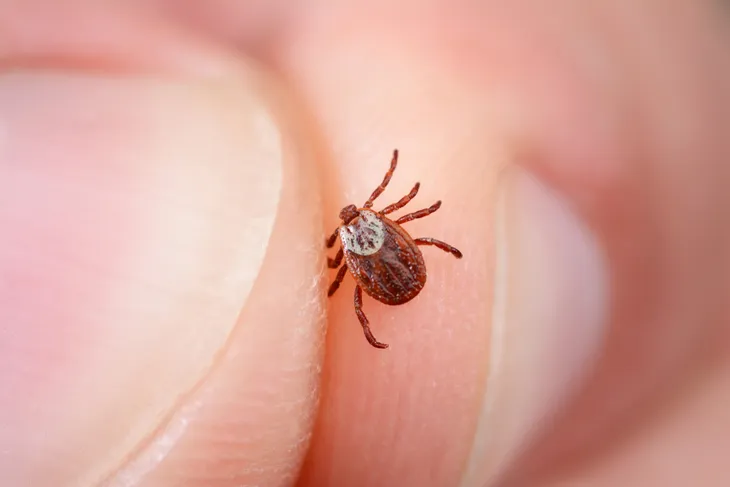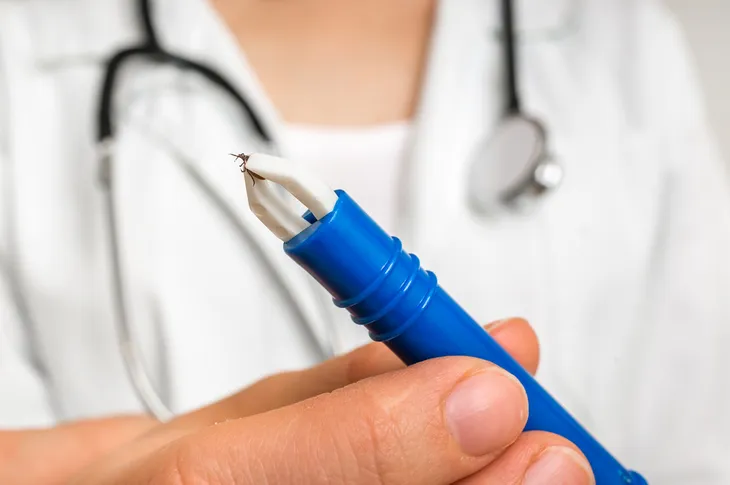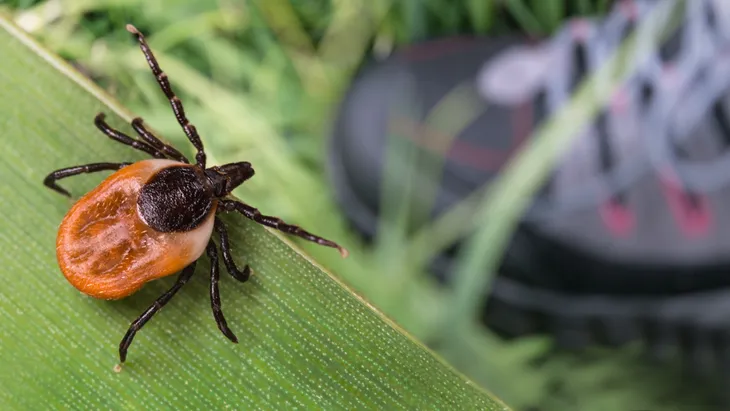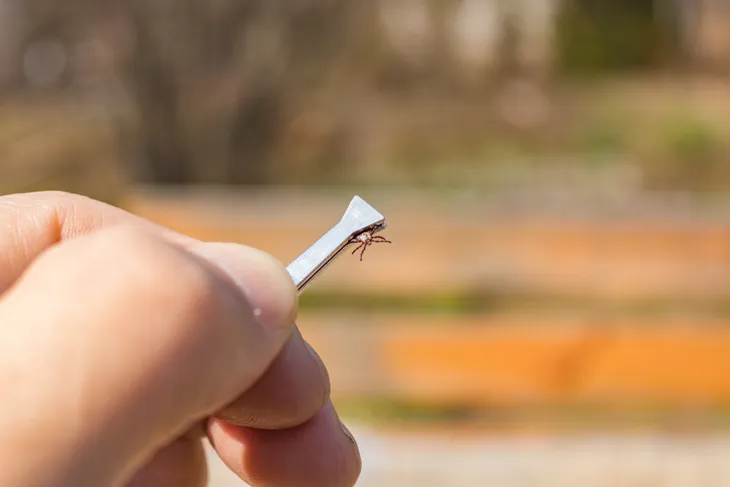The warmer weather brings with it a lot of positives — concerts, camping, and ice-cold drinks just to name a few. But, with the rising temperatures comes a whole new season of creepy crawlies that are just waiting to spoil your vacation. Among some of the worst summer party crashers are ticks.
You’ve likely heard all about the importance of tick awareness but familiarizing yourself with ticks, the dangers that they pose, and how best to keep safe can be as important as applying SPF. So, let’s get you all brushed up on everything there is to know about ticks so that you can enjoy your summer safely.
What Is a Tick?
Familiarizing yourself with what ticks look like and how they latch is the first step in tick awareness. So what is a tick? Ticks belong to the arachnid family of creepy crawlies. They’re smaller than a fly and have eight legs. They don’t fly or jump and they don’t have antennae.
Instead, when ready to eat, they latch on to blades of grass and wait for an unsuspecting mammal to walk by. When the mammal walks by, the tick reaches out and latches on searching for exposed skin. Once it finds the perfect place, it’ll then burrow its head into the area of its choice.
Types of Ticks
There is an extensive catalog of tick species and knowing which one you’ve been bit by is essential to treating the bite and its possible aftereffects.
The most common ticks to look out for in North America include deer ticks, brown dog ticks, American dog ticks, lone star ticks, rocky mountain wood ticks, gulf coast ticks, and western black-legged ticks. All these species are attributed with their own characteristic diseases, though being able to distinguish them is important.
Tick species are regional but understanding which ones to look out for in your area is as simple as a quick internet search. If you love spending your free time outside and in the woods, then taking the time to understand your local tick hot spots and prominent species should be as much a part of your pre-adventure routine as filling up your water bottle.
Symptoms of Tick Bites
In many cases, tick bites are discovered while the tick remains lodged inside the skin. But that’s not always the case.
If you suspect that you’ve been bitten by a tick but see no sign of a tick anywhere on your body, keep an eye out for these common symptoms. If you’ve been bitten by a tick, you may notice pain or swelling at the site of the bite. A rash may develop, you may notice blisters, and you may notice a burning sensation at the bite site. In severe cases, you may even have a hard time breathing.
Advanced Symptoms
Advanced symptoms may appear too, though these are often associated with tick-borne diseases. A full-body rash, neck stiffness, headache, nausea, weakness, muscle or joint pain, fever, chills, and swollen lymph nodes have all been linked to tick bites.
These advanced symptoms may not appear until days or even weeks after the bite. If you suspect you’ve been bitten by a tick and are experiencing any of these symptoms, get to a doctor immediately.
Common Tick-Associated Diseases
If you’re a tick bite victim and are unlucky enough to contract a tick-borne disease, then the symptoms of that disease will usually present themselves in just a few days.
The good news is no, not all ticks transmit disease, but a few do. Here’s a brief rundown of the most common tick-borne diseases and the species of ticks that usually carry them.
Lyme Disease
Lyme disease is the most common tick-borne disease. The tell-tale sign of Lyme disease is a “bulls-eye” shaped lesion (up to 12-inches wide) that has one or more rings around it. Other common symptoms of Lyme disease include fever, headache, fatigue, and skin rashes.
Keep in mind, Lyme disease is only transmissible via the deer tick species and, if caught early, can be treated effectively with antibiotics. Although, it can lead to serious neurological problems if left untreated.
Rocky Mountain Spotted Fever
Rocky Mountain spotted fever affects the internal organs and is found in the southeastern part of the United States and parts of Canada, Mexico, Central America, and South America.
It can be spread by bites from the American dog tick or the wood tick, with an increased risk of transmission in the spring and early summer.
Colorado Tick Fever
Colorado tick fever is rare, though you’re at risk of contracting it if you happen to have a run-in with an infected Rocky Mountain wood tick. There is no preventative vaccine for Colorado tick fever.
Common symptoms include fever, chills, headache, and body aches, which usually clear up in a few weeks. However, more serious cases can develop complications in their central nervous system.
Tularemia
Tularemia can be passed to humans via bites from dog ticks, wood ticks, and lone star ticks. But ticks aren’t the only culprit.
It can also be transmitted through deer fly bites, or inhalation, ingestion, and skin contact with infected animals. Symptoms can be life-threatening and vary based on how the disease was contracted.
Ehrlichiosis
Ehrlichiosis symptoms include fever, severe headache, muscle aches, nausea, confusion, and rash, with the first signs of symptoms typically beginning within 1 to 2-weeks of the tick bite.
Lone star ticks and black-legged ticks are the main culprits of ehrlichiosis. If left untreated, the symptoms can become quite severe.
Why Removing Ticks Is Important
In many cases, tick bites are discovered while the tick is still burrowed in the skin. Though relatively painless at this stage, discovering a tick can be a shocking discovery. But it’s important to remain calm.
Not only is proper tick removal essential but saving and storing the tick is a critical step in diagnosing any possible diseases that you may have contracted.
How to Remove Ticks
To remove a tick, you’ll need fine-tipped tweezers. First, use the tweezers to grab the tick as close to the skin as possible. Then, pull upwards with even pressure. This step is critical.
You’ll want to make sure that you don’t twist or jerk your hand during the removal, as that may cause the mouthparts to break off and stay lodged in the skin. If you are unable to remove these leftover parts, leave them and allow the area to heal.
Once the tick is out, clean the bite area and your hands with rubbing alcohol. Avoid crushing the tick, and instead, place it in a sealed container.
Prevention
Some tick-borne illnesses are treatable, but the best way to keep yourself safe from ticks and the diseases that they carry is through prevention.
Try your best to stick to the center of your trails. If you must venture off into the woods, be sure to wear a long sleeve shirt and pants, especially if you plan on traversing grassy areas. Before you venture outdoors, be sure to liberally apply tick repellent that contains at least 20-percent DEET. It may be a good idea to treat your clothing and your gear with permethrin too.
Lastly, you should take a shower or bath within 2-hours of being outdoors and check your skin closely for tick bites after every excursion.
Stay Vigilant
Tick bites are serious business. Some of the diseases that they transmit to humans wreak havoc on the central nervous system and can lead to severe and long-term health effects if left untreated.
Stay vigilant in the steps that you take to protect yourself against tick bites and keep your family safe this summer.
Remember, all tick bites should be reported to a professional. If you know the species of the tick or were able to store the remnants of it in a sealed container, bring it to your doctor for testing. It could save your life.

